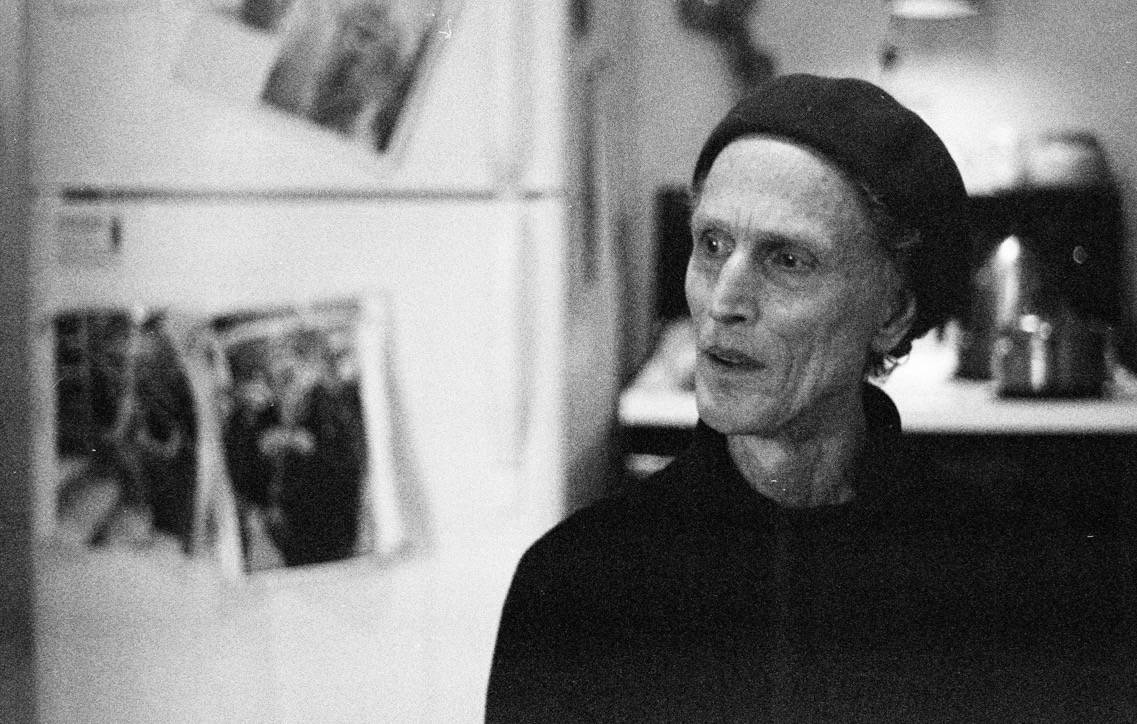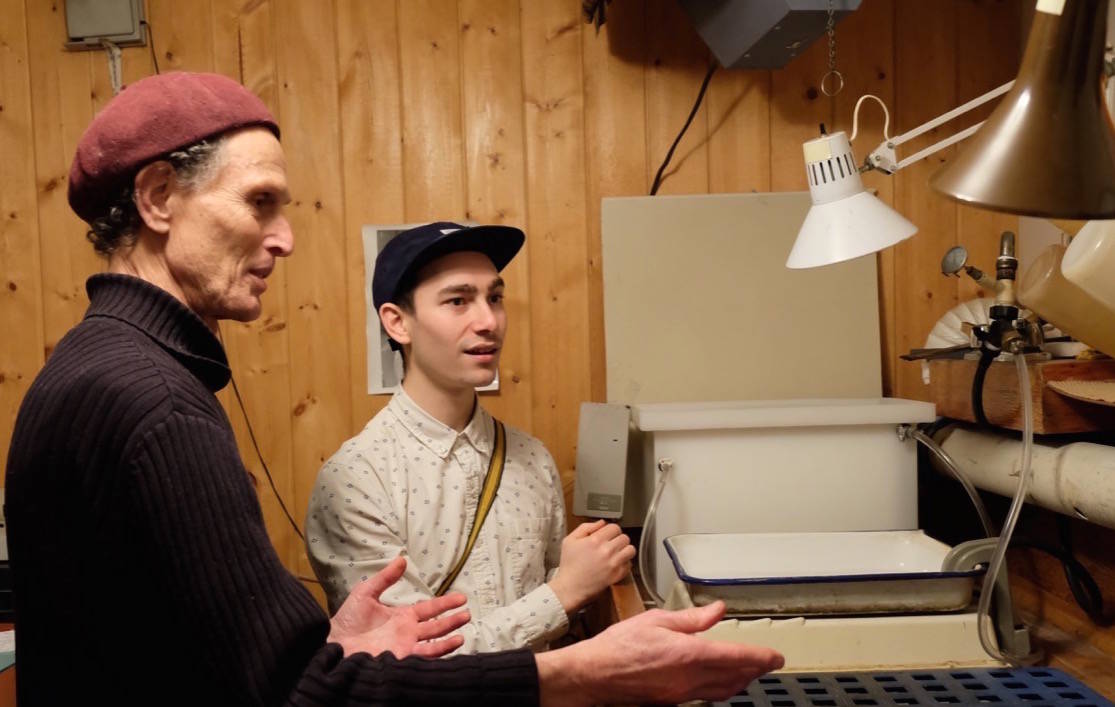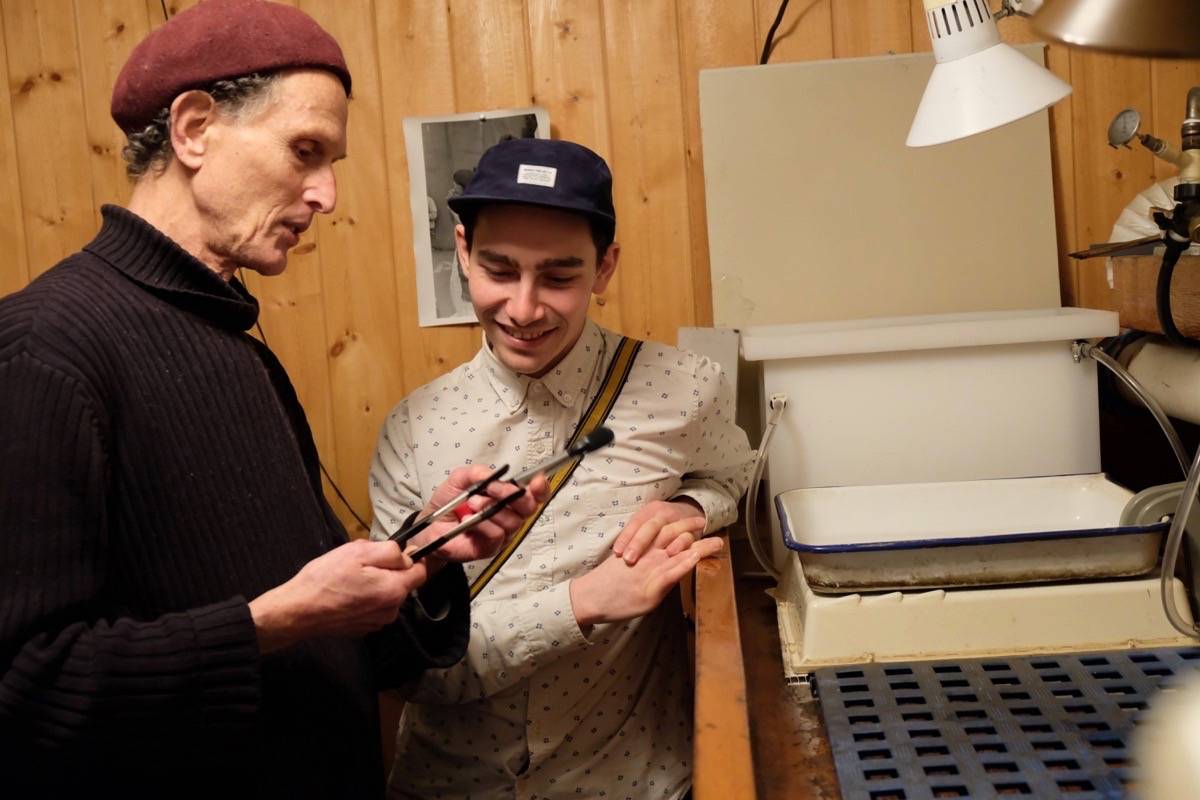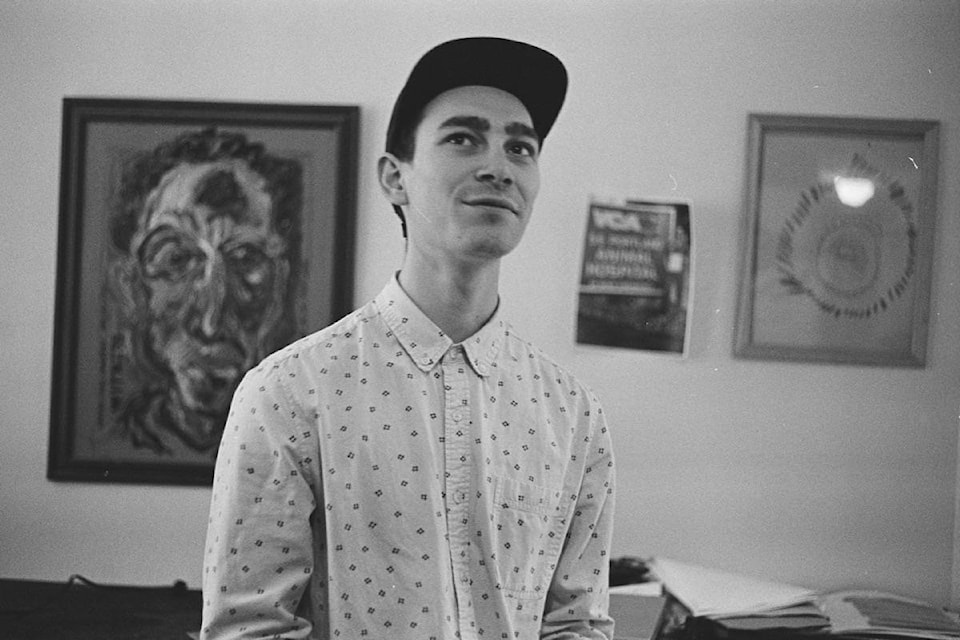Photographer Thomas Nowaczynski is 50 years younger than photographer Fred Rosenberg.
But their common philosophy about non-digital film photography, and their love of it, effortlessly spans those years as the Star discovered in an interview with the two men at Rosenberg’s kitchen table last week.
Rosenberg has never switched to digital. And he does not put his work on the internet, which holds only a couple of dozen of his thousands of photos of the people of Nelson taken over decades.
Nowaczynski, 22, recently started shooting film, and along with a group of other young people in Nelson has started a group that will offer a darkroom and a studio, along with education and support, for people using film cameras.
“I started photography with a digital camera,” Nowaczynski says. “But I was not really taken by it. I knew there was potential, but was not enamored with the process of taking a photo and putting it on my computer and then sorting through the thousands of shots and choosing five and editing them in Photoshop. It did not grab me. I was overwhelmed by the possibilities, and it seemed like almost a ridiculous amount of work to get something tangible.”
Rosenberg laughs at this. “In digital? Digital is too much work?”
This veteran who’s spent half his life in a darkroom can’t believe what he’s hearing: the upending of the conventional wisdom that digital photography is quicker and easier than film.
‘It was real to begin with’
Nowaczynski explains that he likes the physicality of film photography.
“To get my hands dirty with some chemicals, and to see negatives that are physical and that exist, was mind-blowing. I took this photo, and I have it in my hand now. I did not have to go through the whole computer process to get it into the real world,” he says. “It was real to begin with.”
“The first time I made a print it was the same: a combination of magic and chemicals brought it to life.”
He says that while digital offers limitless possibilities, film does the opposite: it limits you, and he likes that. He says creativity occurs within limitations.
“So this medium that has strict limitations requires intention and vision and requires you be present,” he says. “With digital you can just snap.”
Rosenberg laughs again and shakes his head.
“Remarkable,” he says.
‘When my nervous system cycles through the viewfinder’
Why did Rosenberg never go digital?
“I like the craft. It suits me. It is all physical and mental, contained inside, there is no outside program that I have to obey. It depends on my first-hand experience. The tools are not electric. I like that it is a manual process,” he says.
“I feel a direct connection from this to my nervous system and the cycle is complete when my nervous system cycles through this viewfinder.”
Both photographers say one of the valuable limitations of film is that the number of shots you can take is finite.
“Part of me has to be aware of what is left, before I have to stop,” says Rosenberg.
“The film costs money,” says Nowaczynski. “You can’t just snap frames, because you are literally throwing away money. And when you load a roll of black and white 400-speed film you are shooting black and white 400-speed film until the roll is up.”
‘I am flabbergasted’
Nowaczynski’s film photography group is known as LighterCyde Film Lab.
Rosenberg says he was a bit skeptical when he first heard about the project. He wondered if it’s some sort of short-lived fashion or fad.
But when he hears Nowaczynski talk about it, he’s hopeful and tells him he wants to help.
“When I hear about what film means to you and how much you really enjoy it, I am flabbergasted that you can start with that kind of awareness.”
He says he could help them with “exposure, or what film is, or the relationship between the speed and the aperture, basics, how your prints ought to look, what camera you should be using. I can help you customize your understanding.”
Another crucial thing he could contribute: “My enthusiasm, that has persevered through my whole life.”
‘We gabbed for an hour and a half’
Nowaczynski first heard about Rosenberg from one of his L.V. Rogers teachers, but he first met him last year at an exhibit his fledgling group organized.
“I didn’t know who he was. But I noted his intensity and attentiveness. He looked like somebody I should know. There was some kind of understanding there in my body that I could not really quantify.”
The next week they met for coffee.
“We gabbed for an hour and a half,” says Rosenberg. “We talked about the impetus to photograph – what that core necessity is.
Rosenberg says when he talks to photographers he’s listening for what their core motivation is.
“I am looking for a particular one which is: what does it reveal about being alive? Not about what stuff looks like. What does it mean to be alive and how does photography enable me to investigate that?”
“I have not seen your work, but I hear that in you,” he tells Nowaczynski, who at that moment is taking a photo of Rosenberg.
They’ve photographed each other throughout the conversation, but sparingly, with that sense of economy and discipline that many digital photographers have lost.



